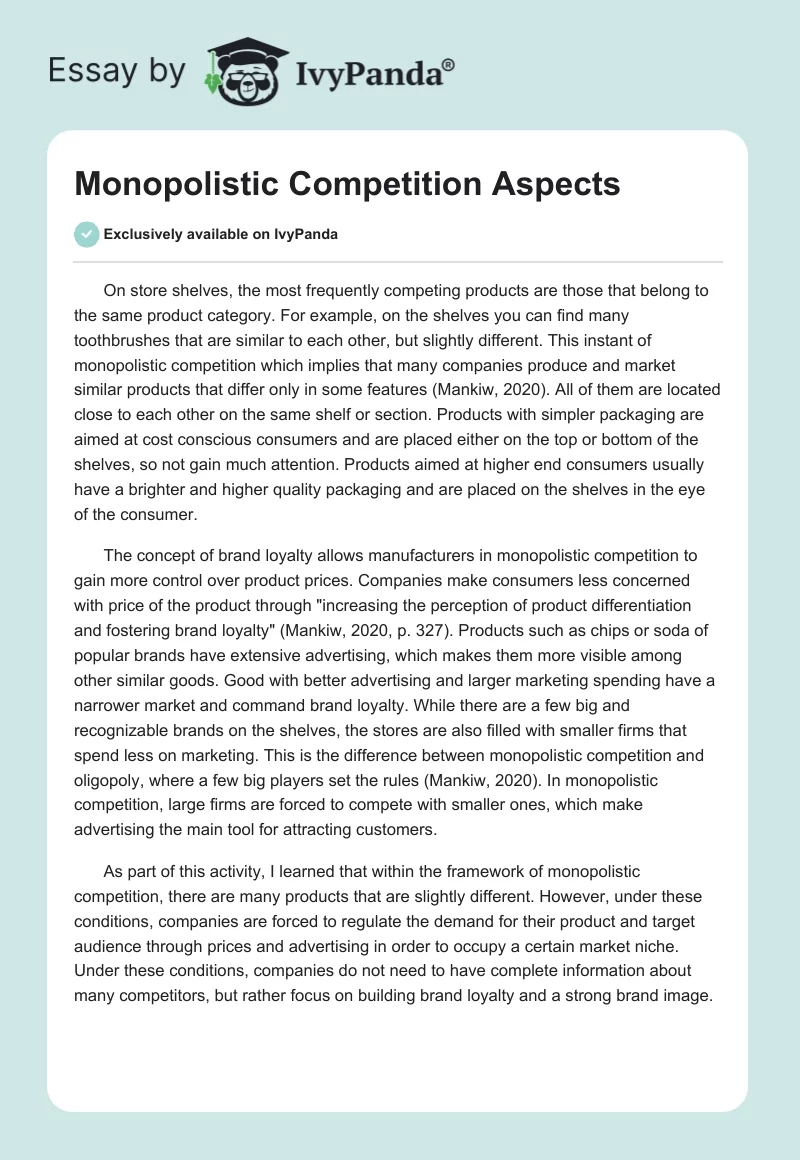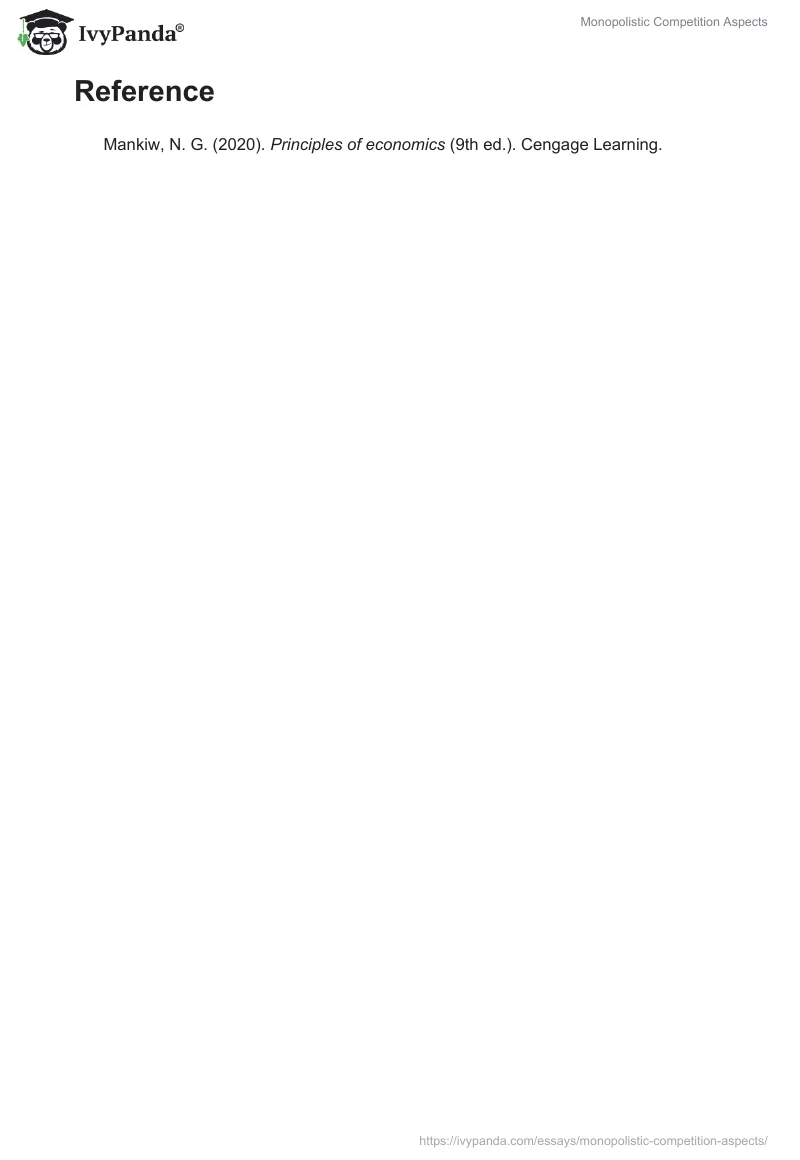On store shelves, the most frequently competing products are those that belong to the same product category. For example, on the shelves you can find many toothbrushes that are similar to each other, but slightly different. This instant of monopolistic competition which implies that many companies produce and market similar products that differ only in some features (Mankiw, 2020). All of them are located close to each other on the same shelf or section. Products with simpler packaging are aimed at cost conscious consumers and are placed either on the top or bottom of the shelves, so not gain much attention. Products aimed at higher end consumers usually have a brighter and higher quality packaging and are placed on the shelves in the eye of the consumer.
The concept of brand loyalty allows manufacturers in monopolistic competition to gain more control over product prices. Companies make consumers less concerned with price of the product through “increasing the perception of product differentiation and fostering brand loyalty” (Mankiw, 2020, p. 327). Products such as chips or soda of popular brands have extensive advertising, which makes them more visible among other similar goods. Good with better advertising and larger marketing spending have a narrower market and command brand loyalty. While there are a few big and recognizable brands on the shelves, the stores are also filled with smaller firms that spend less on marketing. This is the difference between monopolistic competition and oligopoly, where a few big players set the rules (Mankiw, 2020). In monopolistic competition, large firms are forced to compete with smaller ones, which make advertising the main tool for attracting customers.
As part of this activity, I learned that within the framework of monopolistic competition, there are many products that are slightly different. However, under these conditions, companies are forced to regulate the demand for their product and target audience through prices and advertising in order to occupy a certain market niche. Under these conditions, companies do not need to have complete information about many competitors, but rather focus on building brand loyalty and a strong brand image.
Reference
Mankiw, N. G. (2020). Principles of economics (9th ed.). Cengage Learning.


